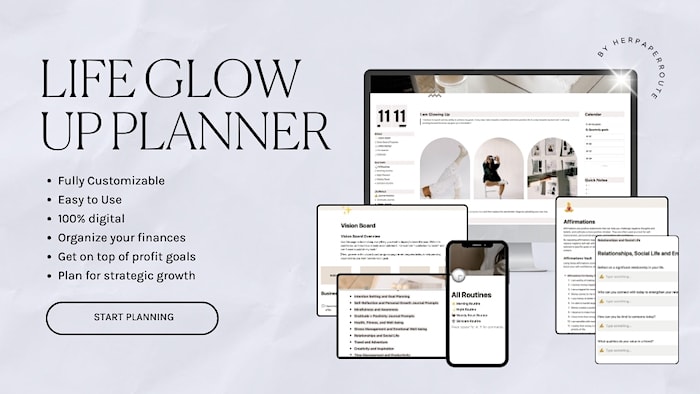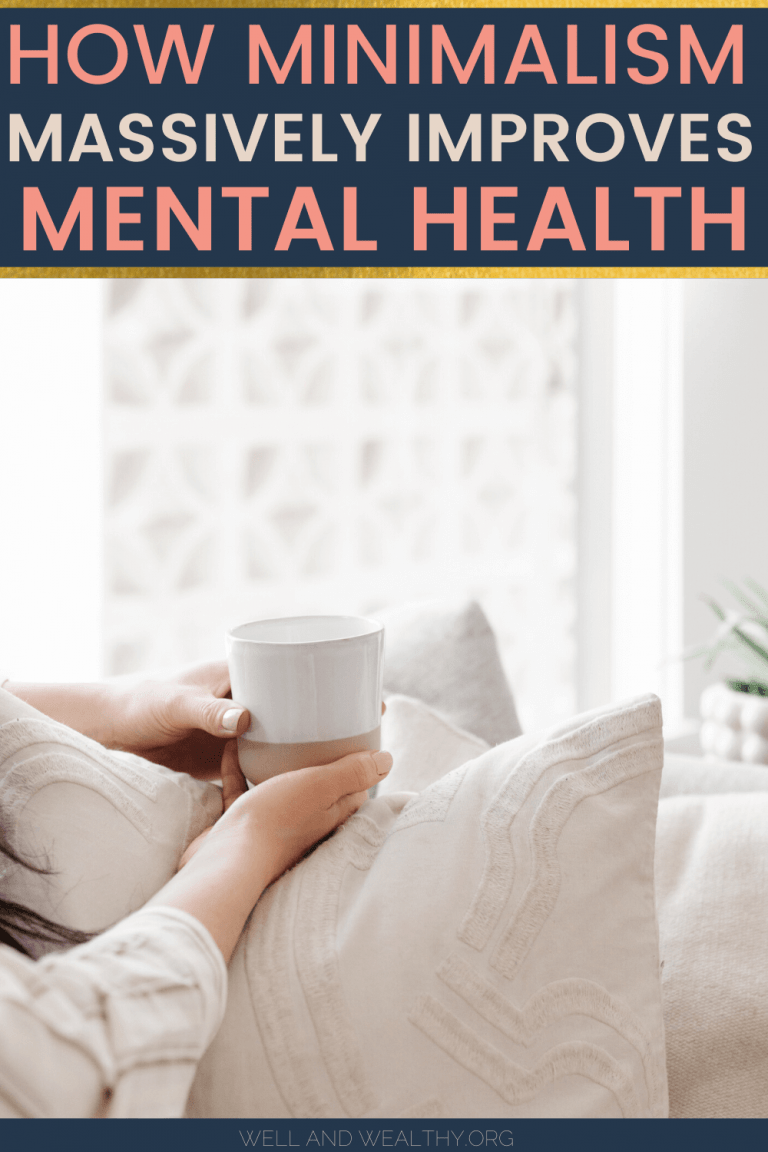6 powerful ways to stop anxious attachment

How children are raised by caregivers in early childhood impacts how they form relationships with friends, acquaintances and romantic partners. How they are cared for and the consistency in style will inform if they feel secure or insecure in bonds they forge, referred by psychologists as attachment theory.
This theory states that the relationship between young children and their parents or caregivers has a huge influence on their ability to form and maintain relationships, both intimate and professional, throughout their lifetime.
Specifically, the attachment developed by a person during childhood unconsciously guides their ability to communicate how they feel and what they need from friends, family members and romantic partners. It determines how they respond to and navigate through conflict. It also informs what unconscious expectations they develop about the other party in relationships.
The theory also categorizes an “attachment style” as “secure” or “insecure,” and within the “insecure attachment style, “there are 3 subcategories:
As an affiliate partner of various brands and sponsored content, we may earn commission on qualifying purchases. Disclaimer | Advertise With Us
- Anxious-preoccupied. The first insecure attachment style is called “anxious.” Individuals with the anxious attachment style tend to seek constant validation of worthiness from others. They usually have low self-esteem and regard others as being better. Because of their own low regard for themselves, they tend to be needy.
- Fearful-avoidant. This insecure attachment style as adults desire relationships but find it hard to depend on another person because of fear of getting hurt. They want closeness with others but find it hard to trust others. Therefore, they keep people at a distance both in romantic relationships and in friendships.
- Dismissive-avoidant. The avoidant attachment style typically involves individuals with low anxiety but high avoidance. People with dismissive attachment style tend to avoid intimacy. They don’t like to rely on others and be vulnerable with people. They like to be in control. Self-sufficiency and independence is a huge requirement to be fulfilled to feel “secure.”
What causes anxious attachment
A person’s attachment style comes from early childhood experiences. Early experiences in the first year of life determine a secure or insecure attachment style for healthy relationships. A baby’s secure attachment to primary caregivers comes from the person consistently and reliably providing a safe and secure experience. When the child cries because of hunger, a parent or caregiver responding consistently impacts how secure the baby feels because someone is meeting their needs. This safety provides them confidence of secure relationships and the feelings of security to start to explore their environment.
Attachment issues or insecure attachment comes from a lack of consistency in a baby’s physical and emotional needs being met. For example, a mother, who is going through the motions in caring for her child and fulfilling the child’s basic physical needs, such as feeding and changing diapers, but otherwise, fails to soothe the child when crying by holding the child or giving the child physical contact, likely will give that child attachment issues.
In this case, the child loves their parent/caregiver but also is fearful because they cannot fully trust that their needs will be met, and attachment anxiety ensues.
Anxious attachment can show up in both children and adults. A child with anxious attachment is developed by a lack consistency in their needs being met. As a result, the a child with anxious attachment is confused about what to expect.
Therefore, they do not feel secure. Intense emotional reactions to separation anxiety is common among children with anxious attachment. Separation from a parent or caregiver spurs inconsolability of crying for longer-than-usual periods of time. Likewise, upon return of the caregiver/parent, the child’s emotional response can be just as intense as it was during the drop-off.
Insecure attachment can lead to life-long attachment disorders and inconsistent attachment patterns.

What are the characteristics of anxious attachment in adult relationships
As a adult, signs of anxious attachment show up most intensely in relationships with large peaks and valleys of emotions, usually referred to as an emotional rollercoaster, from the reunion of a relationship and from the temporary separation from a person.
An adult with anxious attachment style because of their low self esteem needs others, both in their presence and affection, to feel secure.
A reunion can cause extreme happiness and a separation can cause extreme stress. To a person with anxious behaviors, the reunion can feel “life-saving” because of the automatic sense of security felt and the separation can feel life-threatening because of the loss of security.
Individuals with anxious attachment tend to be very sensitive. For example, in a romantic relationship, canceling a date with an anxious person triggers the fear of abandonment.
A common interpretation of this from a person with anxious attachment is jealousy and displays of demonstrations of anger and distrust. When the other person is present again to compensate for the loss of security, a person with anxious attachment will be clingy when the other person is present, crave constant affection, and/or need constant reassurance that the other person will not leave.
Anxiety disorders are common diagnoses for persons with anxious attachment.
Anxious attachment in romantic relationships
Adults with anxious attachment in a romantic relationship suffers from low self esteem with constant fear that they are not worthy enough, good enough or attractive enough for the other person. Therefore, the person with anxiety views their romantic partner with high regard. As a result, they feel insecure about their own worth in the relationship and are highly attuned to the needs, wants and desires of the partner. They fall in love easily and typically want to move fast with commitment.
A failure to respond to their needs or an unexpected break-up can send a person with anxious attachment into a tailspin because of their fear of rejection and abandonment. As a result, they often blame themselves for the failure and interpret it as an unworthiness of love.
The fear of rejection also triggers intense jealousy and unfounded suspicions of their partner’s cheating. It can also provoke a sense of insecurity when alone and as a result, the person with anxious attachment may always want to be with the partner. This fear can also set off obsessive behavior on the extreme end.
The physical need for closeness fulfills the emotional need for safety. They also have very high expectations of how to be cared for. Not meeting these expectations causes intense conflict over seemingly small situations.
Anxious attachment adults also will use sexual behaviors to make up for the lack of perceived love and security because of their intense need for feeling worthy of love and seeking approval. As a result, they use sex as a primary behavior for their love life to fulfill temporarily their need for closeness and reassurance . Because of their low self esteem, they may believe they are not worthy of a long-term commitment and expect others to be unavailable and not interested in long-term commitment.

What does anxious attachment style look like at work
Anxious attachment also impacts interpersonal relationships within the workplace. The root causes, which include low self esteem, a lack of confidence and self doubt.
Those with anxious attachment, therefore, exhibit some of the same behaviors
- Come across as needy because of their need for approval.
- Imposing on others’ healthy boundaries.
- Confirming their behavior and ideas to the group consensus
- Display the need to constantly work with others because of their need to make-up for anxious feelings by being in close proximity with others for security
- Respond strongly to negative feedback interpreting it as rejection because of an intense need to be liked.
- Seek out inappropriate emotional support from work colleagues
Anxious attachment employees also may overcompensate working long hours at the office to fulfill their need to be with others to feel safe emotionally. They also tend to take on more work because of their need for approval. Both can lead to feelings of under appreciation and dissatisfaction because they don’t “see” others putting in the same effort. These behaviors can also lead to higher levels of burnout.
There are also many pros to collaborating with a team member who has anxious pattern of behaviors. They can be high performers because of their need for approval. Therefore, seeking ways to enhance their work performance and develop new skills occur frequently.
They are highly attuned to their surroundings and have strong desires to help others for approval. They are likely to be the go-to employees when the team needs something done outside of the confines of their job description. Because of their need for belonging and approval of others, they will most of the time say “yes” to a request and work to create a comfortable environment for everyone as part of their preference to avoid conflict at all costs.
6 ways to stop anxious attachment
A person seeking to rid themselves of their anxious attachment style takes work and with some consistent effort and self awareness, they can use it to their advantage and minimize the negative aspects.
1. Seek awareness of own attachment style. Anxious individuals can increase their awareness of their own attachment style and how it shows up in their behaviors in close relationships. To create this awareness, it is recommended that they examine their most important relationships from the past to understand what needs they were seeking to fulfill with specific attachment behaviors.
By seeing the connection between what emotional needs trigger certain anxious behaviors, the person will be able to recognize behavior and thought patterns that damaged relationships.
Increasing awareness of the emotional triggers can also improve choices in romantic partners over time. By understanding one’s own need for approval because of fear of rejection, a person’s style of attachment can evolve and as a result, they are in a position to make adjustments if they choose to.
The depth of awareness can lead to the person choosing a partner with a secure attachment style and develop emotional bonds with others.
In couples where both individuals have insecure attachment styles, a relationship therapist is a good option to develop an awareness of your own and that of your partner. Being aware of both styles enables both individuals in the partnership to be empathetic to each other’s style and adapt their adult attachment styles accordingly, when an unmet emotional need triggers an unhelpful behavior.

2. Practice mindfulness to increase self awareness. A powerful mindful technique is journaling (Check out Well and Wealthy’s journaling set) Investigating past relationships through writing to identify he unmet emotional needs that trigger anxious attachment behaviors helps to gain conscious clarity on your values and what your needs are rom others in relationships.
To demonstrate, a common dating behavior with someone with an anxious attachment style is obsessive thinking about why several romantic interests stopped communicating with you. To fullfill your unmet emotional need for approval, you used to repeatedly reach out over text to check in and see how they were doing without them returning the courtesy of getting back in touch with you. In these situations, you came across to these romantic interests as too needy and clingy, which might be a turn-off to someone with a secure attachment style. Journaling would help in solidifying seeing this pattern.
3. Understand your anxious attachment style thought habits. Common unhelpful behaviors of individuals with anxious attachment, such as high emotional reactivity when someone isn’t available in the way you want them to be or attempting to solve other people’s problems at your own expense, are the result of attempts to fulfill unmet emotional needs.
For example, oversensitivity and intense emotional reactions when a romantic interest is not available is set off by your need to feel safe. You need this person’s approval to feel okay.
Likewise, getting involved in trying to solve others’ problems is likely an attempt hto elp you to feel safe because you have another person’s approval.
Understanding the thought habits that produce these behaviors consciously will help you to develop the ability to choose where or not these behaviors are helpful or unhelpful.
Let’s demonstrate. Your intense emotional reaction to a romantic interest when they are not available is triggering your fear of abandonment and rejection. When this happens, your brain’s fight-flight-freeze response is activated.
Back in the caveman days when our ancestors were nomadic, the brain was not as sophisticated as it is today. Survival every day was the main goal and this need to survive developed the ability for threat detection.
Our brains unconsciously are constantly scanning our environment looking for threats to our safety. When your brain identifies a need for safety, it will trigger a way to fulfill that need. When the other person is unable to meet your immediate need to feel safe by being available when you want them to, it triggers an unconscious, highly emotional response.
When this happens, the unconscious threat to safety releases the stress hormone cortisol in the brain. Elevated levels get the heart pumping and adrenaline going in order to seek a way to feel safe again. Reaching out to this person is an attempt to feel safe, but when not available, it reinforces the emotional response to the situation of feeling unsafe. And, this reinforces already existing thoughts and beliefs about your elf. “I am unworthy of someone’s love,” and “I am not good enough, are common thoughts resulting from low esteem.
Without being self aware of this pattern, you can see how it initiates a downward emotional spiral.. These elevated levels of cortisol will likely set off other unwanted behaviors until the unmet need for safety is satisfied.
This is where other unhealthy habits, such as overeating or drinking too much, can start. The brain will continue to seek safety until the need to feel safe is met. Overeating can be a substitute for safety.
4. Allow the emotional energy to move through your body. Emotion is the experience of energy proceeding through the body. Examples of this experience is felt as an awareness of tension in the shoulders in response to an unanticipated memory or situation happening or feeling yourself calm down after some deep breathing.
Energy, just as thoughts, are neutral, but when we apply positive and negative labels to it, emotions are involved and our interpretations of emotions give energy meaning. Knowing that emotions are energy suggests that because they are in motion and changing, they need to be released. Read more about emotional energy and how to stop absorbing people’s energy.
For those with anxious attachment style, it is necessary to allow this emotional energy to move through your body. Allow yourself to feel the emotions. Don’t run away from it.
It can be very uncomfortable at first, but try this exercise:
- With your both hands over your heart, breathe deeply inhaling through your nose for four slow counts, hold your breath for 4 slow counts, and then, exhale through your nose for 4 slow counts.
- Say, “I am safe. I am safe. I am safe” as you inhale and exhale.
- Repeat the cycle three times.
This exercise will calm your nervous system and let it know that you are safe. In addition, it will allow the emotional energy to move through your body. Learn more about this breath technique here.
Try not to suppress your emotional energy. Pushing it down will help in the moment, but be detrimental in the long run to your emotional health wealth.

5. Practice regular self care habits. You hear a lot about practicing self care as a remedy to anxiety and depression. It is because it works. Self care is self love, and it is hard to love someone in a healthy way, if you don’t love yourself.
The best self care options are those that you can insert into your daily routine. Things such as getting 8 hours of sleep, drinking 8 glasses of water to stay hydrated, eating nutrient rich foods, and moving your body regularly. Learn these simple ways love yourself more through self care.
Self care habits are putting down payments on your self love and proactively giving yourself valuable tools that will make you respond better to moments when your emotional triggers from anxious attachment pop up.
6. Proactively communicate your values and emotional needs to romantic interests. Confidence to take this action likely will gain over time as you increasingly consciously understand the emotional triggers that brought up unconscious and unhelpful anxious attachment behaviors. By sharing your needs up front and early in the relationships, you are able more efficiently to identify whether or not the romantic interest is willing to meet your needs. If not, then it is easier to move on and not waste time on a potential romantic partner who refuses to meet your needs.
Conclusion
A child’s relationship with a parent or caregiver has a huge influence on their ability to form and maintain relationships, both intimate and professional, throughout their lifetime. We develop attachment styles during these critical years.
One of the “insecure attachment styles is Anxious-preoccupied. Anxious people with this attachment style seek constant validation of worthiness from others usually have low self-esteem and regard others as being better. These behaviors are triggered by thoughts and feelings of being unsafe.
To stop anxious attachment, actions, such as increasing self awareness of your own emotional landscape and increasing self care habits ,can remedy the intensity of this style over time.
You can then pursue emotional freedom through experimentation to uncover the healthiest ways that work for you to increase your self worth.
To send your self worth soaring, you might be interested in our self-worth system or our total mental health system for happiness and productivity. `








